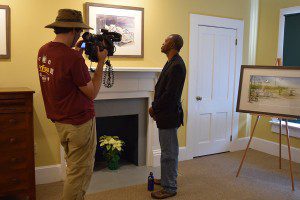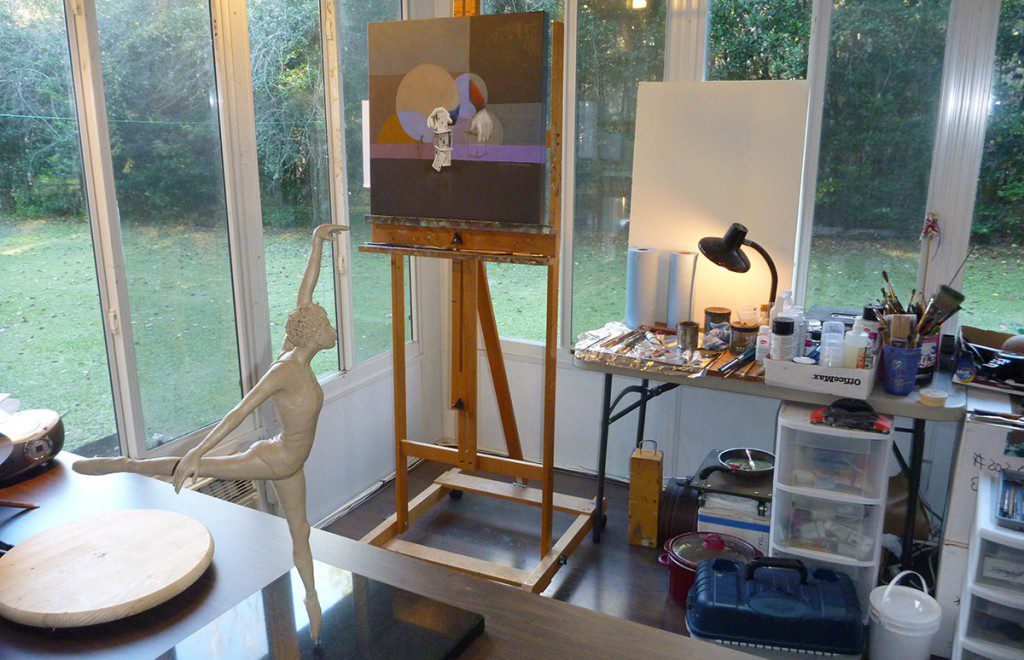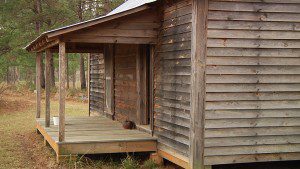Welcome to Part 8 (of 10) of Roaming the Red Hills, which originally aired on the April 14 episode of WFSU’s Local Routes. Through ten 3-minute videos, we’ll explore the natural soul of the Red Hills of Florida and Georgia, from the pine uplands down to its rivers, lakes, and farms. Thanks to Tracy Horenbein for creating original compositions for this video series. The series is narrated by Jim McMurtry.
Funding for Roaming the Red Hills was provided by Tall Timbers Research Station and Land Conservancy.
Rob Diaz de Villegas WFSU-TV
A lot of history doesn’t make it into history books. Artist Eluster Richardson refers to those “everyday scenes we took for granted.” Kids playing under a farmhouse. A community gathering around a mill to grind sugar cane. A farmer working the field with a mule. For an artist, it’s a challenge trying to recreate scenes of a bygone past, especially when there aren’t always photos or other imagery. When he was commissioned to paint these scenes for the Jones Tenant House at Tall Timbers Research Station and Land Conservancy, Eluster did have one thing going for him. He lived them.

With WFSU Producer Rob Diaz de Villegas rolling video, Eluster Richardson talks about paintings he made for the Jones Tenant House display. In this gallery at Tall Timbers hang the original watercolors from which the displays were printed.
Eluster Richardson grew up in on a tenant farm on a Red Hills plantation along Lake Jackson. This type of arrangement was common on Red Hills properties, where African American farmers rented land on which to farm. After the Civil War, many of the area’s farms and cotton plantations started failing. Some fell into disrepair as their owners were killed in the war or moved away. Others couldn’t adjust to a new economy where they had to pay their former slaves. When northerners started riding the train down to hunt quail, they found that the price of land in this area of north Florida and south Georgia was relatively cheap, and a contiguous 300,000 acre longleaf forest was created between several dozen properties, maintained with fire for the purpose of quail hunting. The new landowners inherited tenant farms, which were allowed to continue as they had been while other agricultural lands were planted with pine.
In 2008, Tall Timbers unveiled the Jones House as an historical exhibit after raising $260,000 to restore the site. You can see Eluster’s displays in the video above at different spots around the house. Each of those has a voice station with recordings of the Jones family. Inside the house, you can see various accoutrements from early twentieth century tenant farms, including pillows stuffed with moss. I asked Eluster if this was common, and it was. As he says in the video, they made what they could from what was around them. The moss was smoked of course, to remove chiggers and other pests.
In another of this week’s Roaming the Red Hills segments, Dr. Flossie Byrd speaks of black owned farms in the area, as well as tenant farms, fading away as younger generations worked hard to make new lives for themselves. After working in communications in the military, Eluster got the only job available at the telephone company at the time- phone operator. He worked his way up to management and retired as a network engineer. In retirement, he turned his artistic hobby into a successful enterprise. In addition to the Jones House commission, he created paintings for Viva Florida 500, is the artist in residence at the John G. Riley House in Tallahassee, and has displayed across the state. His latest exhibit is May I Have This Dance, some of which you see in the video above. It starts at the Gadsden Arts Center TOMORROW (April 15)! Is that great timing, or what?
Some of the historical information in this post came from a 1968 history of the region titled From Cotton to Quail, by Clifton Paisley (Published by Florida State University).
Tall Timbers is not open to the public, but does occasionally offer tours of the Jones House. Check their Sunday tour schedule for updates on upcoming events.
Come adventure with us in the Red Hills, Apalachicola River and Bay, the Forgotten Coast, and More! Subscribe to the WFSU Ecology Blog by Email.

Eluster Richardson’s studio. The sculpture on the left was later bronzed and will be a part of Eluster’s upcoming display, titled “May I Have This Dance?”

